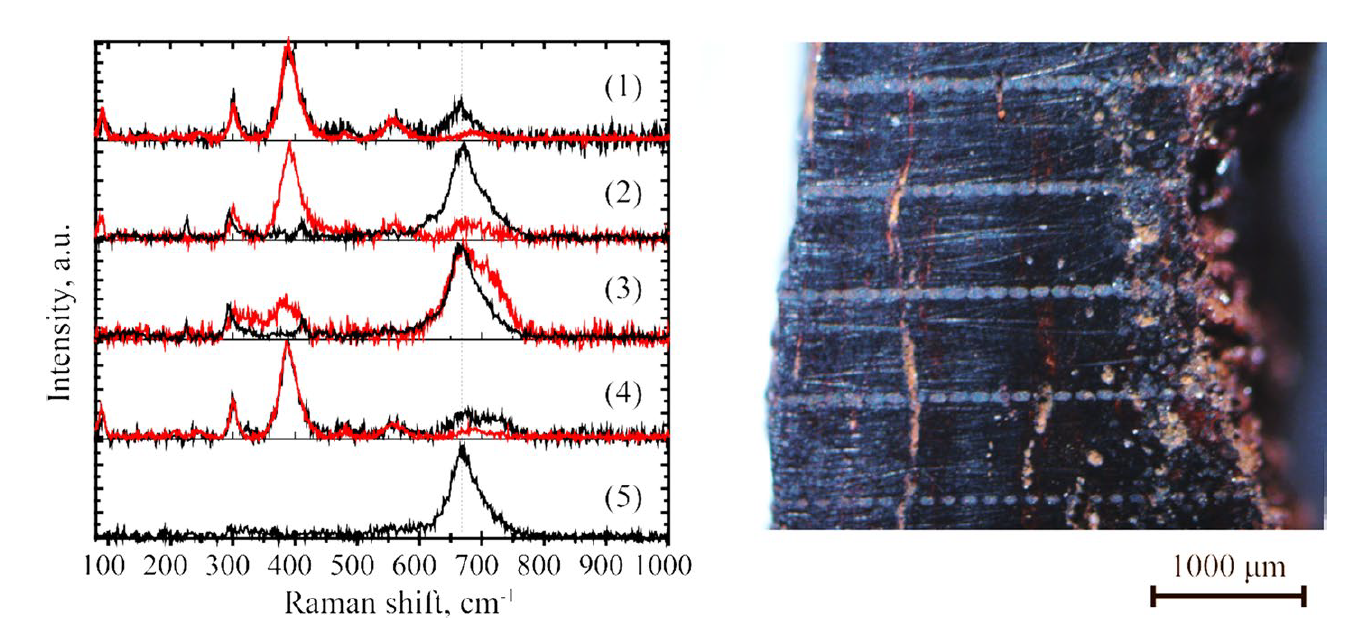by D. S. Prokuratov, A. S. Davtian, O. S. Vereshchagin, N. S. Kurganov, A. A. Samokhvalov, D. V. Pankin, A. V. Povolotckaia, A. A. Shimko, A. A. Mikhailova, P. A. Somov, V. A. Parfenov
Optical and Quantum Electronics, 52(2), 113, 1-12
https://doi.org/10.1007/s11082-020-2231-z

The paper presents the results of research investigating the possibility of applying laser cleaning for controlled layer-by-layer removal of iron corrosion from gilded silver foil on a medieval nomad’s belt pad. Lasers irradiated at the wavelengths of 355, 532, 1064 nm, 2.97, 10.6 μm were tested. A comparison of pulse durations of 100 μs, 100, 8, 6 ns, 75 ps, 100 fs were conducted. Corrosion samples were irradiated in various media: air, argon atmosphere, water, ethanol, engine oil, glycerin. In all of these cases removing of material occurred, but it was accompanied by surface blackening due the burnt organics and to thermal transformation of the goethite and lepidocrocite into magnetite. The best results from the point of view of achieving delicate cleaning and minimal conversion of goethite to magnetite were obtained by the Ti:Sa laser with a 100 fs pulse duration.

 Русский (РФ)
Русский (РФ)  English (UK)
English (UK)